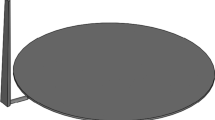Abstract
The objective of this study is to propose an intelligent methodology for efficiently optimizing the injection molding parameters when multiple constraints and multiple objectives are involved. Multiple objective functions reflecting the product quality, manufacturing cost and molding efficiency were constructed for the optimization model of injection molding parameters while multiple constraint functions reflecting the requirements of clients and the restrictions in the capacity of injection molding machines were established as well. A novel methodology integrating variable complexity methods (VCMs), constrained non-dominated sorted genetic algorithm (CNSGA), back propagation neural networks (BPNNs) and Moldflow analyses was put forward to locate the Pareto optimal solutions to the constrained multiobjective optimization problem. The VCMs enabled both the knowledge-based simplification of the optimization model and the variable-precision flow analyses of different injection molding parameter schemes. The Moldflow analyses were applied to collect the precise sample data for developing BPNNs and to fine-tune the Pareto-optimal solutions after the CNSGA-based optimization while the approximate BPNNs were utilized to efficiently compute the fitness of every individual during the evolution of CNSGA. The case study of optimizing the mold and process parameters for manufacturing mice with a compound-cavity mold demonstrated the feasibility and intelligence of proposed methodology.
Similar content being viewed by others
References
Lin YH, Deng WJ, Huang CH, Yang YK (2008) Optimization of injection molding process for wear and tensile properties of polypropylene composite components via Taguchi and design of experiments method. Polym-Plast Technol Eng 47:96–105
Cheng J, Feng YX, Tan JR, Wei W (2008) Optimization of injection mold based on fuzzy moldability evaluation. J Mater Process Technol 208(1–3):222–228
Chen CC, Su PL, Lin YC (2009) Analysis and modeling of effective parameters for dimension shrinkage variation of injection molded part with thin shell feature using response surface methodology. Int Adv Manuf Technol 45(11–12):1087–1095
Wu CY, Ku CC, Pai HY (2011) Injection molding optimization with weld line design constraint using distributed multi-population genetic algorithm. Int Adv Manuf Technol 52(1–4):131–141
Shi HZ, Xie SM, Wang XC (2012) A warpage optimization method for injection molding using artificial neural network with parametric sampling evaluation strategy. Int Adv Manuf Technol DOI. doi:10.1007/s00170-012-4173-5
Alam K, Kamal MR (2004) Runner balancing by a direct genetic optimization of shrinkage. Polym Eng Sci 44:1949–1959
Alam K, Kamal MR (2005) A robust optimization of injection molding runner balancing. Comput Chem Eng 29:1934–1944
Deng YM, Zhang Y, Lam YC (2010) A hybrid of mode-pursuing sampling method and genetic algorithm for minimization of injection molding warpage. Mater Design 31:2118–2123
Kwak TS, Suzuki T, Bae WB, Uehara Y, Ohmori H (2005) Application of neural network and computer simulation to improve surface profile of injection molding optic lens. J Mater Process Technol 170:24–31
Juang CF, Huang ST, Duh FB (2006) Mold temperature control of a rubber injection-molding machine by TSK-type recurrent neural fuzzy network. Neurocomputing 70:559–567
Karatas C, Sözen A, Arcaklioglu E, Ergüney S (2007) Modelling of yield length in the mould of commercial plastics using artificial neural networks. Mater Design 28:278–286
Chen WC, Tai PH, Wang MW, Deng WJ, Chen CT (2008) A neural network-based approach for dynamic quality prediction in a plastic injection molding process. Expert Syst Appl 35:843–849
Altan M (2010) Reducing shrinkage in injection molding via the Taguchi, ANOVA and neural network methods. Mater Design 31:599–604
Gao YH, Wang XC (2008) An effective warpage optimization method in injection molding based on Kriging model. Int Adv Manuf Technol 37:953–960
Gao YH, Wang XC (2009) Surrogate-based process optimization for reducing warpage in injection molding. J Mater Process Technol 209:1302–1309
Shi HZ, Gao YH, Wang XC (2010) Optimization of injection molding process parameters using integrated artificial neural network model and expected improvement function method. Int Adv Manuf Technol 48(9–12):955–962
Yen C, Lin JC, Li WJ, Huang MF (2006) An abductive neural network approach to the design of runner dimensions for the minimization of warpage in injection moulding. J Mater Process Technol 174:22–28
Kurtaran H, Ozcelik B, Erzurumlu T (2005) Warpage optimization of a bus ceiling lamp base using neural network and genetic algorithm. J Mater Process Technol 169:314–319
Ozcelik B, Erzurumlu T (2006) Comparison of the warpage optimization in the plastic injection molding using ANOVA, neural network model and genetic algorithm. J Mater Process Technol 171:437–445
Shen CY, Wang LX, Li Q (2007) Optimization of injection molding process parameters using combination of artificial neural network and genetic algorithm method. J Mater Process Technol 183:412–418
Mathivanan D, Parthasarathy NS (2009) Sink-mark minimization in injection molding through response surface regression modeling and genetic algorithm. Int Adv Manuf Technol 45(9–10):867–874
Silva VVR, Fleming PJ, Sugimoto J, Yokoyama R (2008) Multiobjective optimization using variable complexity modelling for control system design. Appl Soft Comput 8:392–401
Woll SLB, Cooper DJ (1997) Pattern-based closed-loop quality control for the injection molding process. Polym Eng Sci 37:801–812
Kurpati A, Azarm S, Wu J (2002) Constraint handling improvements for multiobjective genetic algorithms. Struct Multidiscip O 23:204–213
Author information
Authors and Affiliations
Corresponding author
Rights and permissions
About this article
Cite this article
Cheng, J., Liu, Z. & Tan, J. Multiobjective optimization of injection molding parameters based on soft computing and variable complexity method. Int J Adv Manuf Technol 66, 907–916 (2013). https://doi.org/10.1007/s00170-012-4376-9
Received:
Accepted:
Published:
Issue Date:
DOI: https://doi.org/10.1007/s00170-012-4376-9



